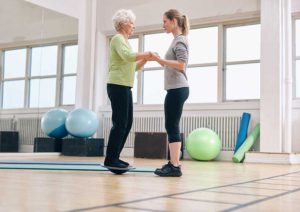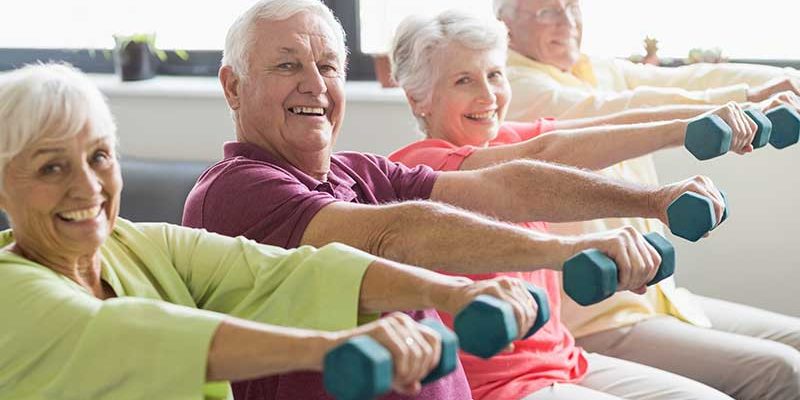Do you suffer from arthritis pain? Are you wanting to be active but are unsure of what exercises, if any are beneficial? This month we will dive into what exercises are the most beneficial when suffering from arthritis pain. We will discuss the benefits of exercises on land and in water. As with all exercise routines, consult your Dr. prior to starting any exercise program. A licensed Physical Therapist can also help design a customized exercise program for you.
Exercise is important for everyone, especially those suffering with arthritis pain. Exercise helps to stimulate the production of synovial fluid in the joints. Synovial fluid provides lubrication in the joints to reduce friction during movement. As we age the fluid tends to “dry up” which makes exercise even more important. Other reasons exercise is so important include:
- Helps to maintain bone strength
- Provides you with more energy throughout the day
- Helps with weight control
- Improves your balance
- Enhances your quality of life
- Can aid in better sleep at night
- Strengthens the muscles around your joints

To Swim or Not to Swim?
Aquatic exercises are very beneficial for those suffering from arthritis pain. The following is a list of some of the benefits of aquatic therapy.
- The buoyancy of the water unloads the joints, making water walking a perfect exercise for those suffering from arthritis pain.
- Exercising in water has been shown to improve cardiovascular health.
- Aquatic exercises have been shown to improve balance and ROM (range of motion)
- Heated pools (82-88 degrees) can help to soothe pain. Cooler pools may not make your joints feel as good as a heated pool; however the benefits from the exercise are the same.
- Water has more resistance than air (about 12x more resistance), so by performing exercises in the pool you are using more energy and therefore burning more calories.
To find a class near you, you can contact your local YMCA, fitness center, or Arthritis Foundation Office for further information.

Land Exercise
There are different forms of exercise you can perform on land that will help to alleviate arthritis pain.
- ROM Exercises: Range of Motion exercises can include something as simple as rolling your shoulders, ankles, and wrists. It can involve raising your arms overhead. Anything that is gentle and keeps your joints moving within your available range of motion. Gentle stretching can also help to reduce joint stiffness.
- Strengthening Exercises: Our muscles provide support and stability to our joints. Strength training can help to build and maintain muscle mass. It is wise to perform strength training exercises 2-3x per week with a days rest in between.
- Aerobic Exercise: This type of exercise can help improve your overall health. Aerobic exercise can include: walking, bicycling, Elliptical, and swimming. According to the Mayo clinic, moderate intensity exercise is the most beneficial. An easy way to judge if you are in the moderate rate intensity zone is if you are able to carry on a conversation although your breathing rate will be increased.
Tips to Protect your Joints When Exercising:
- Keep the impact Low: Low impact exercises such as walking, using the recumbent bike, swimming, and elliptical trainers help to reduce the load on your joints.
- Use Heat: Applying heat up to 20 minutes before exercising can help the muscles relax and ease any pain in the joints prior to beginning your exercise routine.
- Move gently: Take 5-10 minutes to warm up to get your body ready for exercise. This is especially important prior to performing any strengthening or aerobic exercise.
- Listen to Your Body: Go slow and easy with your movements. If you feel pain take a break. Stop if pain is sharp or more intense than your usual pain. Also stop if joints become swollen and/or red.
- Ice Afterwards: Using ice for 10-20 minutes after exercise can help to reduce any inflammation caused from activity.
- Remember to listen to your body. Do not overdo. Trust your instincts, only you truly know what your body can and cannot handle. Start out slow and gradually increase the length and intensity of exercise.
*Information from Mayo Clinic and The Arthritis Foundation*







